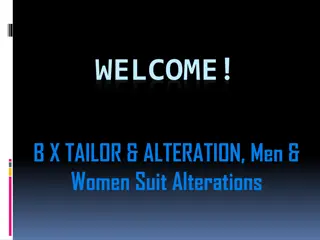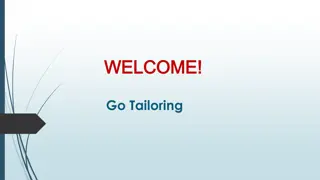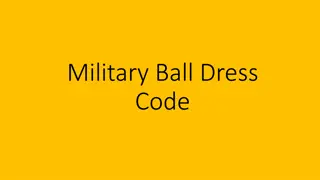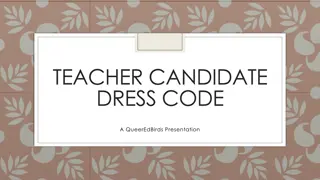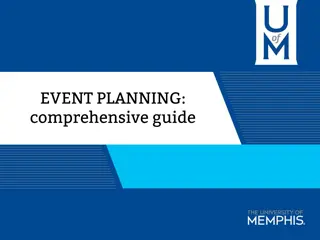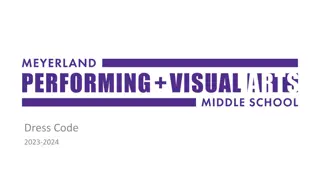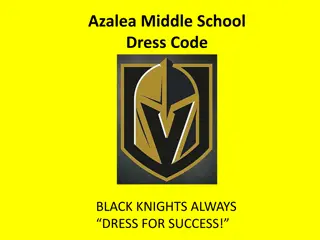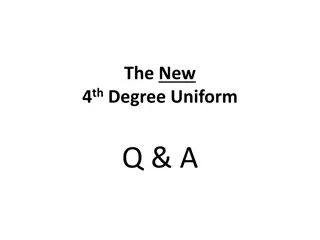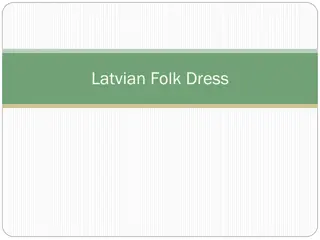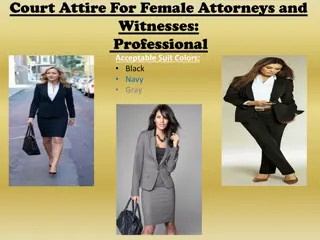Official Event Success Guide: Dress, Communication, and Presentation Tips
Learn valuable tips for achieving credibility and success at official events. From dressing appropriately to communicating effectively and preparing for interviews, this guide covers everything you need to know to make a lasting impression. Discover insights on attire expectations, communication strategies, etiquette reminders, and more to ensure a successful event experience.
Download Presentation

Please find below an Image/Link to download the presentation.
The content on the website is provided AS IS for your information and personal use only. It may not be sold, licensed, or shared on other websites without obtaining consent from the author. Download presentation by click this link. If you encounter any issues during the download, it is possible that the publisher has removed the file from their server.
E N D
Presentation Transcript
Dress for immediate credibility and success will follow. Sandy Dumont
Communication is Key Including Attire Let everyone know what is expected. If you would like the members in uniform, say so. If they need a ball gown or tuxedo, tell them in enough time so they can pack one. If they need to be in your President s shirt tell them. (Remember you can order your shirt through the VFW Store, custom ordering.) Don t make them guess. Do not be the pin police. However, placement is as follows: VFW collar pin on the left over the heart. Flag pin should be the highest on the attire, also on the left side over your heart. The only pins higher than the Flag pin are the collar pins.
Things to Remember Smile Stand up straight. Do not slouch. Put your name tag on the right - so when you shake hands your name tag moves forward. Offer your business card. Iron your clothes when needed - be prepared. Arrive early or on time. My Father use to say, "if you re on time, you're late." If there is no head table skirt, remember people can see your legs. Apologize if you make a mistake. Give and receive compliments.
Preparing for an Official Photo or TV Interview 1. Solid colors are better than prints, checks or plaids for photos and interviews. Bright colors are better than pastels. 2. In an interview, avoid dangly earrings, they can detract from what you are saying. 3. Be prepared for questions: Take a facts leaflet with you for reference. Have a couple ideas in mind to talk about. Bridge negative stories into positive responses. 4. Calm your nerves with long deep breaths. 5. Have a bottle of water if possible.
Using Your Cell Phone While at the Head Table You can use your cell phone to take pictures and/or notes. You can check your phone if you are waiting on a response to questions asked at the meeting. You can glance at your phone to check texts. Sometimes it s something you need to be made aware of immediately. i.e. can t hear on Zoom. Do not check emails Do not make or take calls Do not go on Facebook Do not text friends Do not play games You do not want to appear to be disengaged
Its my first banquet. What do I need to know when dining? Which fork do I use? Start from the outside and work your way in toward the plate. Dessert forks or spoons are typically at the top of the dinner plate. Which bread plate is mine? Think BMW Bread Meal Water, Bread is to the left of your dinner plate and water is to the right. Waiters serve from the left and retrieve from the right. It is polite to wait to eat until all at the table are served. However, it is OK to start if the person waiting tells you to.
Protocol Speaking Introductions The first speaker should address the head table, others only need to address the hosts i.e., Dept. President & Commander. Also, any Representatives sent by National. Speakers are usually introduced in order, main speaker last. The final speakers should be the host. i.e., District Commander & District President if at a District function. Remarks should be brief and on topic. Know your audience. Watch your time. Don t ramble. Be prepared to speak anytime. Start at the extreme left end of the head table, work your way in, then go to the far end of the right side. (not across) Introduce invited guests with their title i. e. Commander in Chief John Doe Introduce spouse/guest of invited guest with their name, then guest of the President (no need to say the President s name) If there is a sub-head table, start there Guests in the audience can be introduced during dinner
Other Protocols and Chain of Command Respect the Office. Work Together. Remember the Chain of Command. What happens when members directly contact the Auxiliary Headquarters. Voting Rights & Responsibilities VFW & Auxiliary Same but Different Know the Bylaws Don t Guess Say Thank You, Good Job





